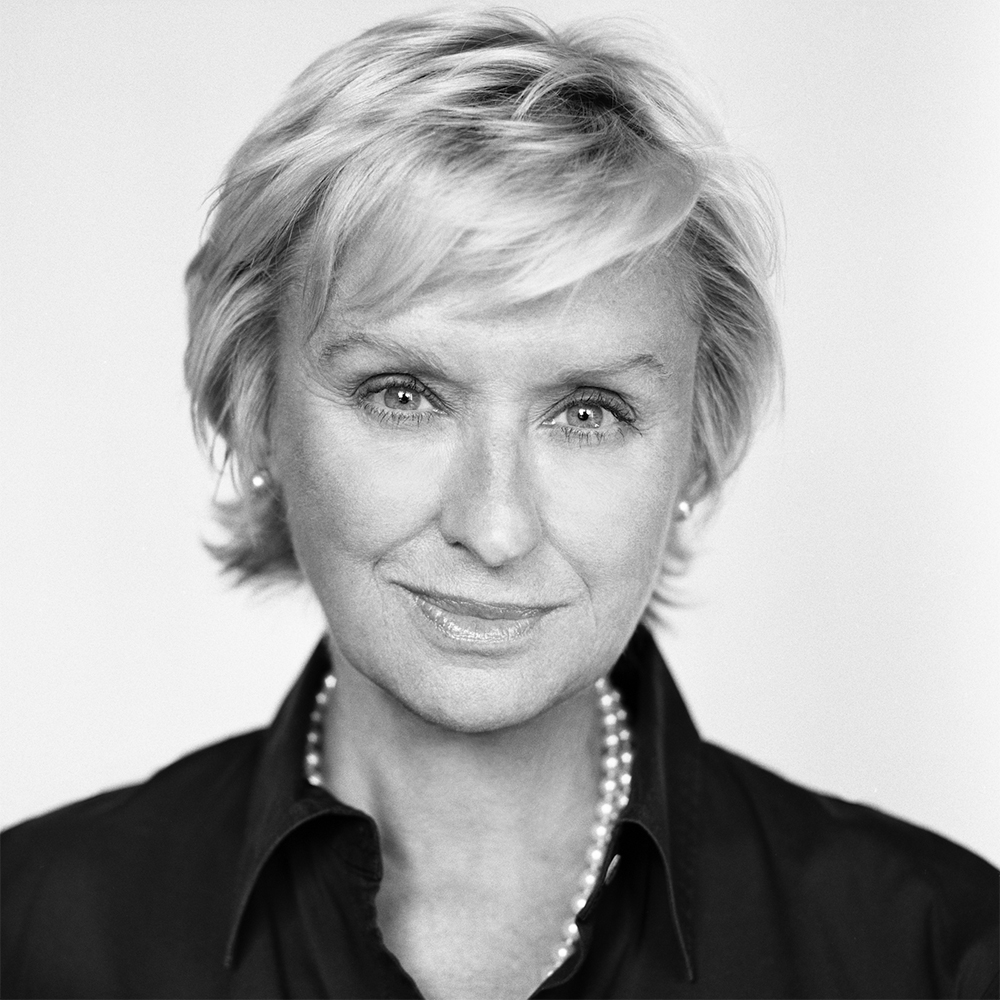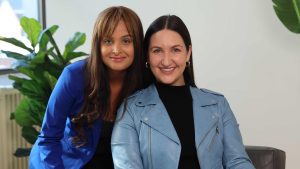Photography by Brigitte Lacombe
Inside the media icon’s indomitable crusade to drive change and champion women around the world.
Interview by Lance Chung
Tina Brown: if you aren’t familiar with her name, remember it now. The 64-year-old is a change agent, a formidable tour de force who has always been unapologetically fearless in her mission to provide a platform for women. Her professional pedigree showcases a blazing trail throughout the media kingdom where she’s left her mark at some of the world’s most iconic companies. At Vanity Fair, where she served as editor-in-chief from 1984 to 1992, Brown was brought in to save the then-flailing publication and did just that by more than doubling its advertisers and onboarding about a million new readers. Next up? The New Yorker, where she brought Condé Nast’s “crown jewel” back to life from the brink of a readership collapse with a new team and strategic plan. Then she charged into the digital era by creating The Daily Beast. While her resume glitters with success, it doesn’t mean she hasn’t had her share of tumbles along the way. Most obvious among those being her failed magazine (Talk) in partnership with disgraced Hollywood scion, Harvey Weinstein.
In perhaps her most important role yet, Brown’s stewardship of her multi-city summit series Women in the World has allowed her to empower women and spark change. Leading up to Toronto’s 2018 event, which featured notable luminaries like Justin Trudeau, Katie Couric, and Steve McQueen, we caught up with the powerhouse to talk about feminism, resilience, and the work that still needs to be done in society’s collective march towards equality.
It’s been about eight years since you started Women in the World. Why did you feel the need to create something like this?
I wanted to do it then because I felt that feminism had become a torpid beast in the US. It wasn’t so much that I had this great credo to wave the feminist banner. It was that I was meeting these women from overseas and emerging countries that were busting down walls when it came to gender equality, education, honour killings, and all these horrendous cultural and political oppressions. I was very enamoured with these women and thought they were so brave and such pistols, and yet no one was telling their stories or giving them their own platform. So I decided to start the summit for that reason. Feminism had just become very complacent [in the US]. We won some battles and still have more to fight, but it wasn’t a greatly engaged thing and young women didn’t particularly identify as feminists. Gradually, these global stories actually energized the American audience.
There was this one moment at the very first summit when Leyma Gbowee, who led the women’s revolution in Liberia and helped to tackle the dictator in power, heckled the audience and asked, “Why aren’t you marching, what’s wrong with you?” I just thought it was a moment when it caught fire in the audience and you could see women thinking that we have to do more, and why aren’t we doing more?
Then, of course, cut to the Women’s March on Washington, which was the biggest single-day protest in American history. You suddenly saw that women had woken up and the fire had caught on. So, I feel very strongly about Women in the World having played a part in arousing consciousness and telling stories that you don’t necessarily hear elsewhere.
The last few years have really been a turning point in history for women with the #MeToo and #TimesUp movements. What have you learned from experiencing that shift in culture about galvanizing people in times of turmoil?
It’s certainly a very, very exciting moment because people thought the Women’s March was galvanized and it sort of did, but it happened and it hasn’t gone away. Then the Weinstein case happened, and it was like a flame that was waiting for a match. It ignited with a huge bang. The #MeToo movement has disrupted tremendously. [In the past], I’d go to so many events and discussions where you’d have some pretty smug CEOs sitting there talking about the tightrope for women and how they’re increasing their tightropes. They were all very at peace with themselves about diversity as a big program, which they kind of get to in-between other much more important things.
Then suddenly, it was like, “oh my God, if I don’t deal with this issue in my own company, I’m going to look like a dinosaur. I’m going to be fired by the board, and I now suddenly have my back side under a fire here because, if I’m not careful, I’m going to find myself in the searchlight of a very, very bad social media storm.” Social media has helped us to make that happen because there is such transparency that you cannot hide. You can’t sit on a conference saying how great your women’s diversity inclusion program is, when in fact, it’s just window dressing.
Women have constantly had to fight for equal opportunity and a place at the table. Beyond that, there are also women of colour, different sexual orientations, and transgender women who face even steeper climbs. How do you try to acknowledge their unique experiences and challenges through your work?
The whole point of Women in the World is the extraordinary diversity of it. Intersectionality has always been our credo, even before the term was fashionable. You cannot suddenly separate the treatment of women from the treatment of all minorities, and from the treatment of every single member of society and human rights in general. There isn’t such a thing as separated-out women’s rights. We’re talking about including half of humanity and it’s not some kind of marginal cord here.
You have been at the helm of some of the most iconic companies out there in media. In your experience, what defines a great leader?
A great leader is someone who can ignite passion and unify a group towards a single passionate purpose. A great leader makes high standards so clear everyone on the team internalizes them and reinforces.
You have also been able to bring on some incredible people to your teams at the various companies you’ve been at – from Vanity Fair and The New Yorker to Women in the World. What do you look for when you’re attracting new talent, and how do you retain it?
I’m a very conventional hirer. I’ve often hired people who’ve had nothing to do with magazines before but who I think are brimming with fresh ideas, insights, and connections. Then it’s a question of having a really diverse mix of people. Those who are great inside players working with copy and writers, and others who are great outside players interfacing with the world that the magazine needs to cover.
I hire people for as much the way they think as their job expertise. I like people who are strong and challenging rather than “yes” people. I’ll take a good idea from anywhere and I’m not put off if someone has a big fat failure on their resume – I have a couple myself and I think having a reverse makes you stronger and wiser.
On that note, how has failure served you, specifically?
I think failure can be both energizing and enriching in that you learn so much about what you did, the mistakes you made, but also how you handled the mistakes and why. From that, it gives you a lot of strength. In fact, I sometimes say that if you haven’t had a failure on your résumé, I’m worried because it might mean you have one on my watch. No one who has a long career gets through without a reverse. I think one of the reasons I was so happy when I started at The Daily Beast 10 years ago was because I had come off the failure of Talk magazine. It was like, “okay, the worst thing happened. I survived. Let’s party.” It’s very liberating.
What was the hardest lesson that you had to learn?
Well, the first thing I learned was never to go to work for Harvey Weinstein. It’s a very philosophical observation, but at the time it seemed like, “oh my gosh, what a fabulous idea.” And, well, enough said. That was a major mistake that I made in my life, and I sometimes wonder to myself how I ever managed to make it [afterwards].
Going to work for Harvey made me realize that I had a charmed life with regards to business successes and bosses. The first person who I worked for at Tatler was an absolutely great guy. Then, for 18 years, Si Newhouse at Condé Nast was terrifically supportive. He was certainly tricky at times and right with the politics of the court of Louis XIV, as you may know if you’ve read my Vanity Fair Diaries, but at the same time it was a very supportive and civilized environment. I was so used to that that I didn’t ask around enough to know what I was getting into when I left to work for Harvey. It really did teach me to be much more cautious and careful. Until that moment, it was always like, “Hey, I’ll take the risk. This will be great. Let’s jump in with both feet.” Now, I do a lot of due diligence when somebody comes to me to do something. I spend some time really finding out what I might be getting into because you don’t want to do that twice.
Who has been your greatest teacher?
My husband, Harry Evans, for sure. He has been my mentor, my best friend, the love of my life. I’ve learned so much from Harry because he’s older than I am and a fantastic editor, a famous editor in the UK. Journalistically, I’ve learned an enormous amount from him and learned that he has a tremendous grace and strength under pressure. He’s also shown me how the long view is very important with relationships. I don’t have feuds, bad blood or rejections. Whatever goes wrong, I can get past it. Some people can’t, they will hang onto it. It’s important to move forward. Ben Bradley, who was a great friend of ours, used to say, “nose down, ass up, keep moving steadily forward into the future.”
What is the best advice that you can give to men and women who want to take ownership of their lives and navigate the current landscape?
First of all, I think a sense of humour is pretty important – learn what is truly important. Don’t wine and be a victim when it’s not the most important issue of your day. Things can be irritating and offensive, but do ask yourself, “Is this the one? Is this the thing that I’m going to spend my time thinking and worrying about?” I’m not a great believer in playing the snowflake card, which is a very different issue from the horrendous kind of abuse and stuff we’ve seen in some of the cases out there. But I do like a certain toughness in the workspace because you have to get the job done, and not everybody’s a wonderful person to work with, but you’ve also got to have some resilience. Resilience is important to me.








